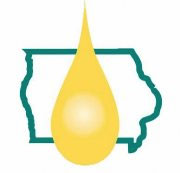 A tour of some Hawaiian biodiesel facilities and the infrastructure that supports them demonstrated the sustainable nature of the green fuel. Biodiesel Magazine reports that recently Pacific Biodiesel, Big Island Biodiesel and Hawaii Pure Plant Oil hosted the tour, showing how the islands are developing a model that supports green jobs, local agriculture, the livestock industry and the community.
A tour of some Hawaiian biodiesel facilities and the infrastructure that supports them demonstrated the sustainable nature of the green fuel. Biodiesel Magazine reports that recently Pacific Biodiesel, Big Island Biodiesel and Hawaii Pure Plant Oil hosted the tour, showing how the islands are developing a model that supports green jobs, local agriculture, the livestock industry and the community.
Guests representing various facets of the local community attended the event, from state legislators to farmers, ranchers and biodiesel fuel consumers.
With many of the pieces now in place, farmers, ranchers and biofuel producers hope to garner state support of this expanding community-based production chain. State and federal support will foster more local farming, ranching, production jobs and the involvement of the local community in sustainable, renewable energy creation, growing the local economy, keeping Hawaii green and working to achieve the state’s clean energy goals. The tour was broken into three segments.
The Hawaii Pure Plant Oil farm was founded in 2008 by father and son team Christian and Jamie Twigg-Smith who planted a total of 200 acres of jatropha with the intent of harvesting its seeds and extracting the oil for biodiesel production.
Now, five years after the farm’s inception, the Twigg-Smiths have formed a direct collaboration with Pacific Biodiesel Technologies under its federally funded Hawaii Military Biofuel Crop project. The project involves developing production models for jatropha and other potential biofuel crops such as sunflower, safflower and camelina, to share with potential biofuel crop growers throughout the state.
The article goes on to say the recently installed HMBC seed crushing mill, the first of its kind in Hawaii, can crush a wide variety of sources. In addition, those oils can be sent right next door to Big Island Biodiesel, a multifeedstock biodiesel plant.











